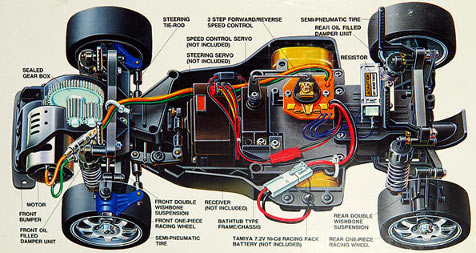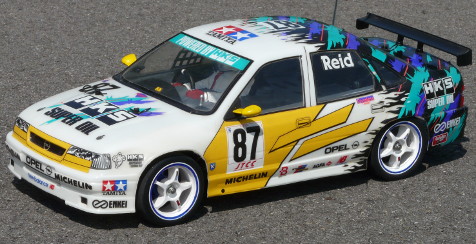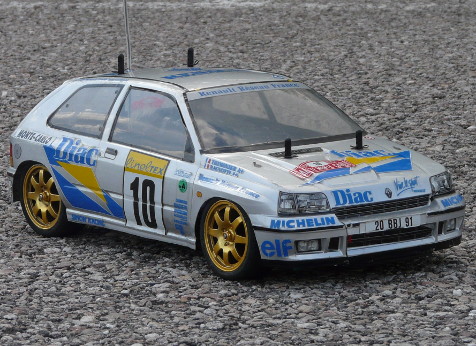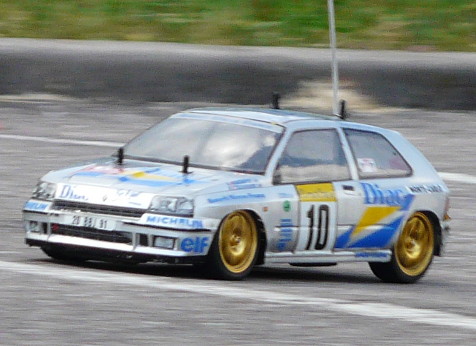FF platform
For a question of logic, I sacrificed chronology in order to tell the story of the TA, TB, TL and TT sequel. So back in 1993 with the FF platform which name means Front Front because it is Front wheel drive and the motor is located at the front of the chassis. In fact, it is some kind of flashback to the original TA-01 and TA-02 since the FF platform directly inherits from them.
If you think that the FF-01 looks like a TA-01 with the motor relocated at the front of the chassis, then you are almost right. In fact, the FF-01 chassis is a new gearbox placed at the front of a TA-02 bathtub, the rear being new too since there is no gearbox at all. This platform is interesting because it is another demonstration of the TA-01/02 versatility and of Tamiya's strategy regarding the new category they created. The FF-01 was used by 16 models from 1993 to 1998. Customers will love the realistic handling, the splendid bodyshells but also for the chassis performance, unlike preconceived ideas. This FWD chassis with the motor located at the very front doesn't handle poorly compared to its cousin TA-01/02 which is 4WD with a central-rear mounted motor. On the contrary: the FF-01 is far more directive and precise in turns, allowing it to seriously challenge TA-01/02s at equal motor. Many FF-01 races were held in clubs and many drivers really enjoyed them.
After 5 years of loyal services, Tamiya unveiled the successor, the FF-02 chassis:
FF-02 chassis (1998)
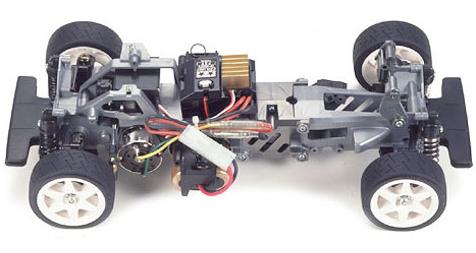
58224 Peugeot 306 Maxi WRC
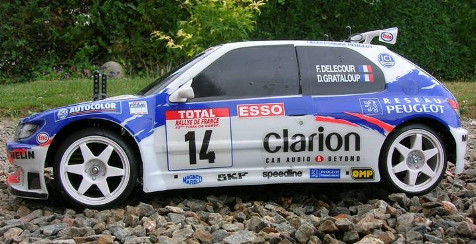
And here comes there the tragedy. Unlike the FF-01 which was received (and truly was) as a TA-01 variant with a specific handling and interesting specifications, the FF-02 turned to be... dull. With less performance due to the motor located behind the front wheels (less weight on the front wheels, so less traction) and a very predictable handling, the new FF-02 lost the “character” of the FF-01, the “thing” that made drivers love the first generation. In addition, the FF-02 can't change the wheelbase like the FF-01 could (239mm short, 257mm standard). In fact, the only good thing about the FF-02 was that it was more solid and more reliable than the FF-01. But this was not enough to turn it into a great chassis, and the amazing Peugeot 306 Maxi WRC bodyshell could not help make it more desirable for the public either.
Moreover, the FF-02 chassis design was no innovation at all: the chassis is borrowed from the M-03 (longer spacer) and the arms are borrowed from the TL-01. In addition, at the time the “fun” and successful FWD chassis is named M-Chassis. So, only 3 models use the FF-02 chassis, the last one being released in 1999, just a few months only after the chassis entered the offering. Models will remain in catalog up to year 2005, probably more because of stocks than due to public demand (well, this still remains a guess: I don't personally know every RC market everywhere in the world where Tamiya sells models).
Then an 11-year gap until Tamiya released a new FWD chassis with motor located at the very front for the Touring category.
FF-03 chassis (2010)
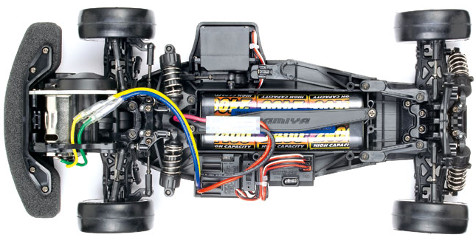
58467 Castrol Honda Civic Vti
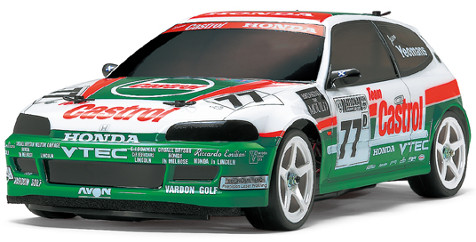
In order to make sure that fans remind the beloved FF-01 when seeing the new FF-03, Tamiya gave the first model of the series the bodyshell of kit 58127 from 1993. As for the new chassis, forget the FF-02 mistakes: an entirely new design, longitudinally oriented battery pack to reduced chassis width (and recenter the masses) and a new gearbox (later borrowed and slightly modified by the XV-01). Just like with the FF-01, the wheelbase is adjustable, this time in 3 dimensions (257 / 251 / 239mm). So far, 5 models using this chassis were released, but no more since 2012: the RC market is not as big as in the 90's for this kind of chassis, so this may explain the few models. Or may be Tamiya is already developing the 4th generation.
Conclusion about the FF platform
As a variant of the first Touring platform, the FF-01 was very successful in the 90's, probably because of the new on-road craze. Apart from the mistakes Tamiya made with the FF-02, another chassis was introduced on the FF market segment: the M-Chassis that we will review next. Nonetheless, Tamiya did introduced a 3rd generation in the early 2010's: well born as it seems, the FF-03 received a warmer welcome than the FF-02, but clearly not as much as the FF-01 was at the time.
Related articles:




